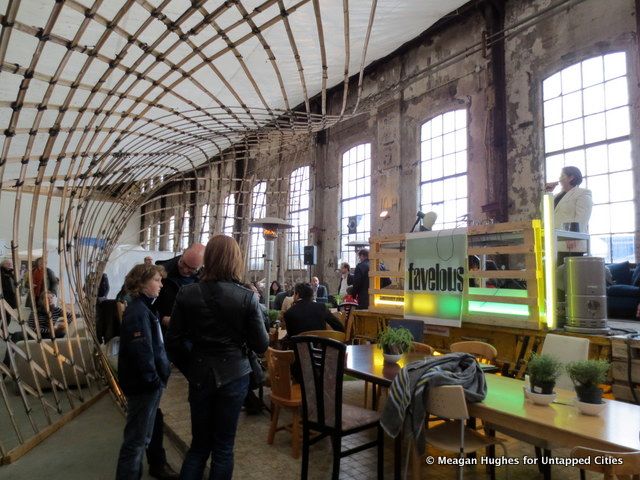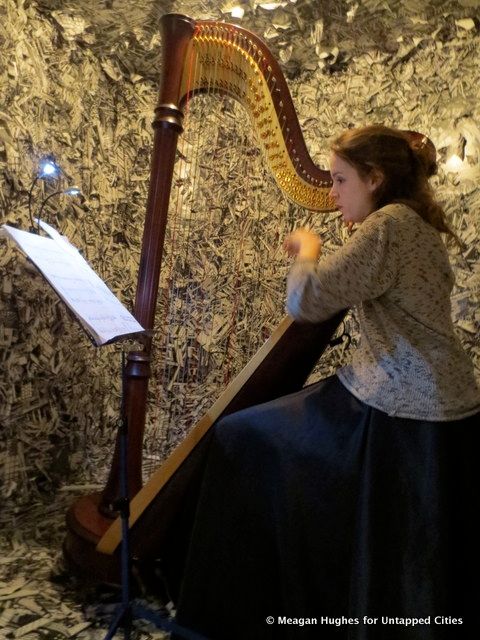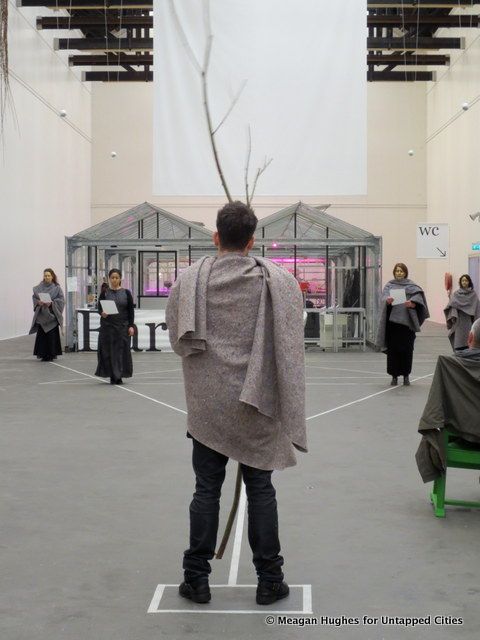NYC’s Forgotten ‘War on Christmas Trees’
Discover how an obscure holiday crackdown affects festive street vendors today!


A group of artists known as the United States of Opera has taken over the inside of a warehouse in Amsterdam. This warehouse, otherwise known as the Freezing Favela, is a temporary city located within an industrial park in the Oostenburg neighborhood of Amsterdam. For those of you unfamiliar with the word, “favela” is a Brazilian term referencing a shanty town or slum; often located on the outskirts of a city. Such was the place I found myself in after having wound my way through an interminable parking lot and past a makeshift beach park to come upon the entrance, which was marked by two unassuming sentries in the form of cows.

Freezing Favela is the vision of Mediamatic, a self-described “cultural institution” based in Amsterdam that undertakes a wide array of projects promoting new technologies and experimental art as it relates to cultural development. The favela is a bustling workspace of experimentation; offering community workshops, performances and cuisine locally sourced from the aquaponics farm breathing life into the cold austerity of the vast industrial hall.
One of the newer communities to have taken form in the favela was the Opera Playground. The week long experiment involved musicians, composers, and other technical artists to create an opera for the 21st century. Playing with form and space on many levels, a group of artists took on the favela as its own musical gymnasium. The result can be described as various abstractions of opera manifested into post-apocalyptic performance pieces designed to engage audiences as part of the experience.

It was interesting to note that despite the vastness of the venue, the recurring theme of the staging was minimalist–in set design, costuming, and even the use of physical space. Only two lucky people at a time were treated to the most minimalist experience of all as they listened to one of the largest instruments known in the western world–the harp–played in a tiny room. Passing through the main part of the industrial space, you would find a mini-opera contemplating existential ideals, or an aria sung by a sense-deprived soloist. Alternately, if you happened to take the stairs on the way to the WC, you may just stumble across a one-women performance art piece taking place among the shadows of the staircase.

As audiences reemerged from their latest encounter, I was tasked with the role of drawing them into yet another unlikely enclosed space to capture their experience of the event. Hidden amongst the aquaponic growth was a microphone for audiences to record their response to the question, “What did you see?” The ‘unusual’ part of it all was that they were asked to vocally respond by mimicking the sound of a bird. Using the technological expertise of my collaborator, the voices of the participants were transformed into the sweet sounds of bird songs, and incorporated into a sound installation interspersed between real-time samplings of opera diva improvisation set to electronic beats.
Despite the brevity of this community project, many questions emerged pertaining to how this collaboration will influence the future of opera. At least as a starting point, it certainly influenced the temporary citizens of the favela and the dynamic cultural evolution of the space. The playground has since been dismantled, but the warehouse remains as an alternative nesting space for creative types or those who just want to experience a favela of the future.
Subscribe to our newsletter